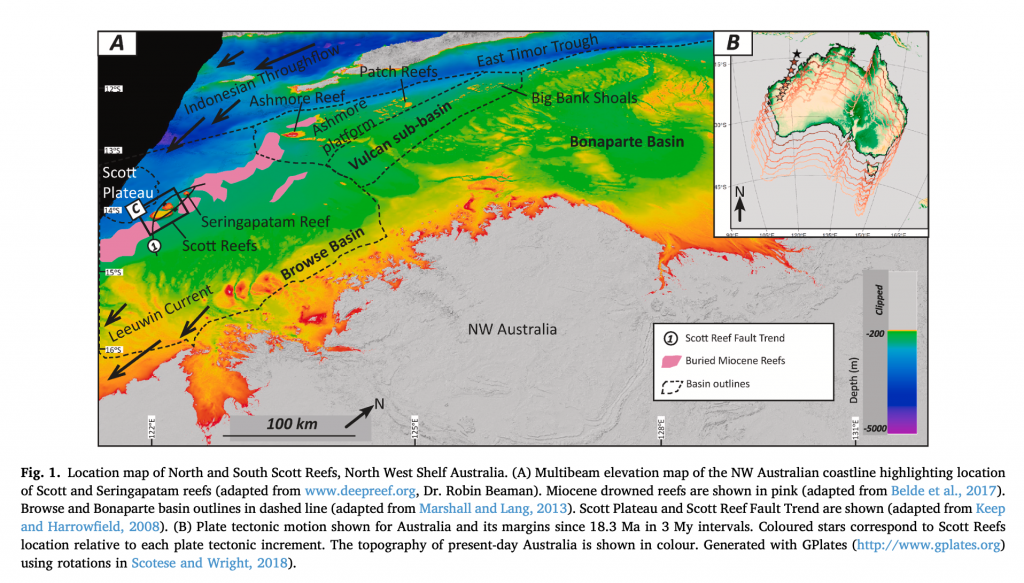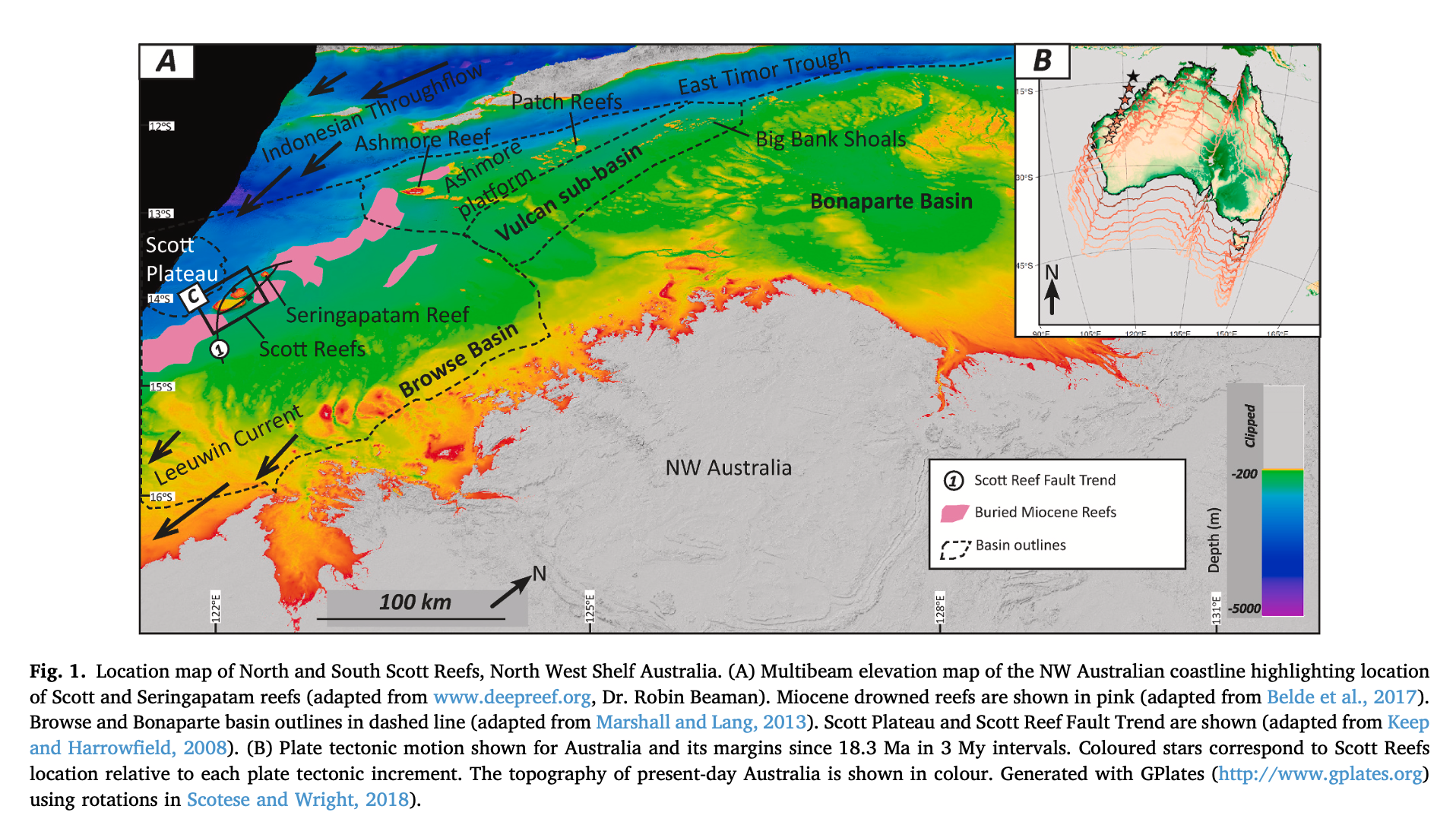North and South Scott Reefs are isolated carbonate platforms separated by an inter-reef channel on the NWS, Australia. They evolved from a barrier reef in the Miocene, and into isolated carbonate build-ups (ICB’s) during the Pliocene, and finally to the isolated carbonate platforms that continued to present day. However, the timings of coral reef turn on and off are not well constrained with respect to global climatic changes in this region. The North West Shelf (NWS) of Australia recorded marked climatic and oceanographic changes through the Cenozoic. For example: (1) the Mid Miocene Climatic Optimum (MMCO), leading to the onset of ICB’s and carbonate platform development; (2) the Mid Pleistocene Transition (MPT) (ca. 0.8–0.6 Ma) and the associated change in regional climate from wet to dry; and (3) glacial-interglacial variability through the Pleistocene until present day. Availability of high resolution and extensive 3D seismic data provides a unique opportunity to investigate the evolution of these reefs using seismic stratigraphy and seismic geomorphology. Four main phases of carbonate factory evolution (Phase I-IV) were identified from the Miocene to present. A chrono-stratigraphic framework is constructed, detailing relative sea-level (RSL) changes and the impact of global (e.g., climate, eustasy) and regional (e.g., tectonics, oceanography) forcing parameters on their development. Seismic stratigraphy reveals that despite rapid accommodation rate changes, the oceanographic setting, antecedent topography and rapid vertical reef accretion played a key role in the persistence of Scott Reefs. It is likely that the Indonesian throughflow (ITF) current has been a critical component in controlling the local climate. The Leeuwin current, tides, swells and wind regimes similarly exert a major influence on the NWS climate, whilst the inter-reef channel likely bypassed terrigenous sediment influx away from the reefs, avoiding periods of inundation during wet climates.
Keywords: Seismic stratigraphy; Seismic geomorphology; Carbonate platform; Coral reefs; Tectono-stratigraphy; Paleo-environmental reconstruction; Chrono-stratigraphic framework

Carra Williams, Victorien Paumard, Jody M. Webster, Jonathon Leonard, Tristan Salles, Michael O’Leary, Simon Lang,
Environmental controls on the resilience of Scott Reefs since the Miocene (North West Shelf, Australia): Insights from 3D seismic data,
Marine and Petroleum Geology, Volume 151, 2023, 106188, ISSN 0264-8172, https://doi.org/10.1016/j.marpetgeo.2023.106188.
(https://www.sciencedirect.com/science/article/pii/S0264817223000946)
![]()

